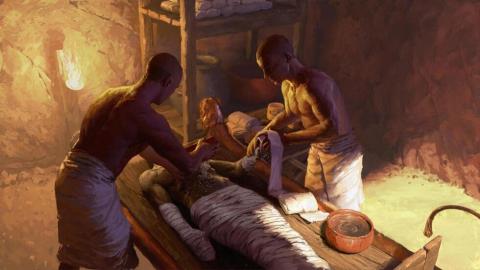‘Surprising’ mummy ingredients discovered

The discovery of dozens of beakers and bowls in a mummification workshop has helped reveal how ancient Egyptians embalmed their dead, with some "surprising" ingredients imported from as far as Southeast Asia, a study said on Feb. 1.
The exceptional collection of pottery, dating from around 664-525 B.C., was found at the bottom of a 13-meter (42 feet) well at the Saqqara Necropolis south of Cairo in 2016.
Inside the vessels, researchers detected tree resin from Asia, cedar oil from Lebanon and bitumen from the Dead Sea, showing that global trade helped embalmers source the very best ingredients from across the world.
Ancient Egyptians developed a remarkably advanced process to embalm corpses, believing that if bodies were kept intact they would reach the afterlife.
The process took up to 70 days. It involved desiccating the body with natron salt, and evisceration, removing the lungs, stomach, intestines and liver. The brain also came out.
Then the embalmers, accompanied by priests, washed the body and used a variety of substances to prevent it from decomposing.
But exactly how this was done has largely remained lost to time.
Now a team of researchers from Germany's Tuebingen and Munich universities in collaboration with the National Research Centre in Cairo has found some answers by analysing the residue in 31 ceramic vessels found at the Saqqara mummification workshop.
By comparing the residue to containers found in adjacent tombs, they were able to identify which chemicals were used.
The substances had "antifungal, anti-bacterial properties" which helped "preserve human tissues and reduce unpleasant smells," the study's lead author, Maxime Rageot, told a press conference.
Helpfully, the vessels...
- Log in to post comments










